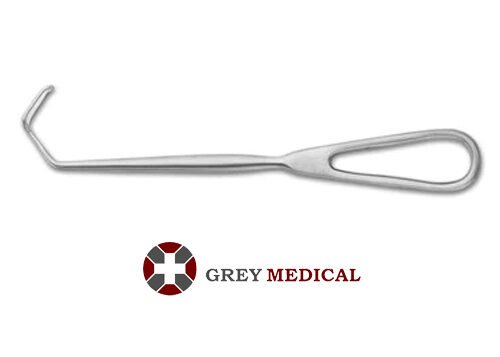Introduction: A Game-Changer in Neurosurgical Instruments
In the highly specialized and challenging field of neurosurgery, every instrument must be carefully designed to meet the specific needs of the surgeon and the delicate structures they are working with. One such instrument is the Cushing retractor, which has transformed the way neurosurgeons approach surgeries involving the brain and spinal cord. Named after Dr. Harvey Cushing, a pioneer in neurosurgery, this tool has played a pivotal role in the evolution of surgical techniques.

The Cushing retractor is recognized for its precision, reliability, and ability to hold back tissue with minimal interference, thus providing a stable and unobstructed view of the surgical area. This article explores the role of the Cushing retractor in modern neurosurgery, its design features, and its contribution to successful surgical outcomes.
The Evolution of Surgical Retractors: From Basic Tools to Specialized Instruments
Before the introduction of specialized retractors, surgeons often relied on rudimentary tools or manual retraction to maintain a clear view of the surgical site. While effective in some cases, these methods were not ideal for the intricate demands of neurosurgery, where precision and minimal disruption to tissues are critical.
Dr. Harvey Cushing, renowned for his innovations in neurosurgical techniques, recognized the need for more sophisticated retractors that could provide better access without causing unnecessary tissue damage. His invention of the Cushing retractor addressed this gap, offering a solution that allowed surgeons to retract tissue gently yet effectively.
The design of the Cushing retractor has since been refined, but its core purpose remains the same: to hold back tissue while providing surgeons with the freedom to work with both hands. This shift towards self-retaining retractors revolutionized the field, leading to safer and more successful neurosurgical procedures.
Key Features of the Cushing Retractor: Design and Functionality
At first glance, the Cushing retractor may seem like a straightforward tool, but its design is carefully crafted to meet the unique demands of neurosurgery. Constructed from high-quality stainless steel, the retractor is both durable and easy to sterilize, making it suitable for use in sterile surgical environments.
The Cushing retractor typically features two blades connected by a ratchet mechanism, which allows the blades to lock in place once inserted into the tissue. This self-retaining feature is crucial, as it frees up the hands of the surgeon and their assistants.























Comments
0 comment